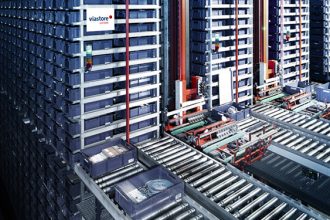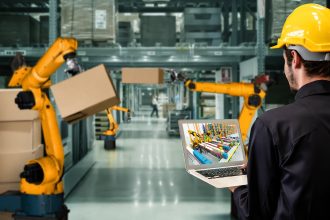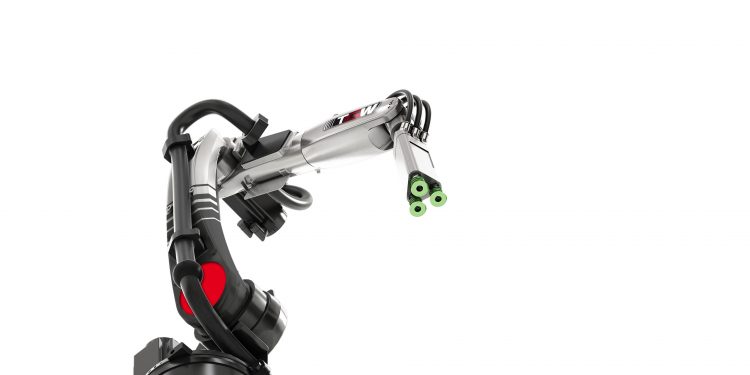
Robots are everywhere, or so it seems. In the year 2020 alone, close to 400,000 industrial robots entered the workplace, making appearances in manufacturing, distribution centers, military applications, and more. They are proving their value and delivering a quick return on investment, and if you haven’t yet added them to your operations, now is an excellent time to start considering them.
One of the biggest reasons behind robotic growth is the labor shortage. Robots—rather than replacing humans as once was feared—serve to enhance the work employees are doing in manufacturing, warehouse, and distribution centers. They take on the jobs many humans no longer want the dirty, the repetitive, the dull, and the sometimes-dangerous tasks.
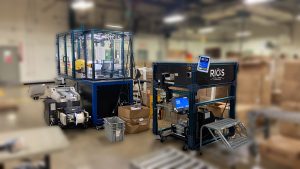 Beyond helping their human partners with these tasks robots can also deliver higher productivity and efficiency than humans in some cases. Take a highly dull, repetitive task, for instance. A human might have a quota to meet, and they make sure to meet it. But go beyond that quota? Not likely without incentive.
Beyond helping their human partners with these tasks robots can also deliver higher productivity and efficiency than humans in some cases. Take a highly dull, repetitive task, for instance. A human might have a quota to meet, and they make sure to meet it. But go beyond that quota? Not likely without incentive.
A robot, on the other hand, will work to the extent of its capability. Additionally, robots don’t need sick days, ensuring that companies can make up the approximately 20 percent-plus headcount gap many are experiencing. This allows companies to hit their throughput goals and key performance indicators (KPIs). When you achieve that level, you can easily justify the expense of purchasing your first robots.
In the warehousing and manufacturing space, there are three main types of robots you’ll find available. Determining which—or which combination of the three—is right for your operations is something to examine with a robot manufacturing partner or independent consultant.
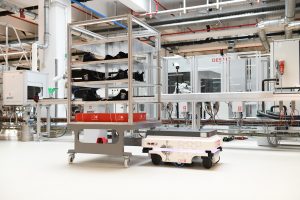 One of the three most common types of robots to choose from are the mobile models known as Automated Guided Vehicles (AGV) and Autonomous Mobile Robots (AMR). These robots can take a direct, streamlined route in the DC, increasing throughput efficiencies and productivity. The second type is Robotic Singulation Auto Induction (RSAI) automation, which often looks like high-speed sortation systems that streamline the entire enterprise. Finally, there is stationary automation in the form of robotic work cells. These robots perform repetitive and sometimes unpopular tasks like box packing, piece picking, etc.
One of the three most common types of robots to choose from are the mobile models known as Automated Guided Vehicles (AGV) and Autonomous Mobile Robots (AMR). These robots can take a direct, streamlined route in the DC, increasing throughput efficiencies and productivity. The second type is Robotic Singulation Auto Induction (RSAI) automation, which often looks like high-speed sortation systems that streamline the entire enterprise. Finally, there is stationary automation in the form of robotic work cells. These robots perform repetitive and sometimes unpopular tasks like box packing, piece picking, etc.
Determining the right fit for your operations means working with your robotics partner on crucial factors: Is this a new, greenfield operation? Brownfield? Is it a legacy system that needs some upgrading and adding on? What is the size of your operation and your productivity goals? A robotics manufacturer will know how to guide you and find the right solution.
Robotics are innovative solutions that can zero in on your pain points and operational inefficiencies. If you haven’t yet added this type of automation to your facility, now is the right time to explore your options. Robots are a path forward; not considering their potential role in your operations is to overlook an opportunity.
For more information about The Robotics Group: https://www.mhi.org/robotics
For further information about the Buyer’s Journey:
Robotics – The Buyer’s Journey, Part II
Avoid “Pilot Purgatory” With This Six-Phase Process
Beyond The Robot: Keys For A Successful Robotic Implementation


